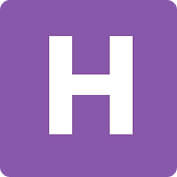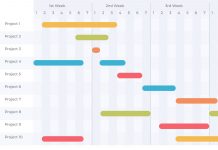Time is the one resource every project manager wishes they could multiply. Between meetings, deadlines, and client updates, hours slip away faster than expected. That’s where effective time management strategies for project managers make all the difference, and the right tool can turn chaos into clarity.
In 2025, the best time tracking software isn’t just about recording hours. It’s about helping teams stay productive, manage workloads, and gain real insights into how time is spent. Whether you’re managing a small creative team or a large remote workforce, choosing the right time tracking tool can improve accountability and boost project success.
This guide will walk you through how to evaluate, compare, and select the software that truly fits your needs, without wasting time on irrelevant features or outdated options.
Time Tracking Faces New Pressures in 2025
Time tracking is no longer a simple “clock-in, clock-out” tool. As businesses evolve, several new pressures make it harder to maintain accuracy, accountability, and usefulness:
- Cross-device fragmentation: Employees now switch between desktops, laptops, tablets, and smartphones. Without seamless sync, time entries become inconsistent or lost.
- Hybrid & remote shift: Teams spread across home, office, and field sites raise the stakes for reliable tracking and transparency.
- Project accountability: Clients expect more detailed breakdowns of time per task or deliverable. Vague tracking no longer suffices.
- AI & predictive reporting: Modern tools can flag anomalies (e.g., overtime spikes) or suggest optimizations; old trackers can’t keep up.
- Privacy and compliance concerns: With data regulations stricter than ever, tools must allow consent control, anonymized logging, and audit trails.
Key Features to Look For in the Time Tracking Tools
Choosing the best time tracking software in 2025 means looking beyond timers and dashboards. Businesses now need systems that simplify operations, ensure accuracy, and support hybrid teams. Below are the core features that define a reliable and future-ready time tracking tool.
Ease of Use and Interface
An intuitive interface is essential for quick adoption and consistent usage. When employees can start and stop tracking with a single click, they’re more likely to keep accurate records. Tools such as Toggl Track and Clockify focus on clean layouts, visual calendars, and clear color coding, making it easy to identify projects and tasks. In 2025, simplicity is no longer a luxury it’s what ensures that your team actually uses the software every day without errors or delays.
Automation and AI Assistance
Modern time tracking tools increasingly rely on automation to eliminate human error. Automatic activity detection, smart reminders, and AI-generated task suggestions help reduce manual input and improve reporting accuracy. For example, Timely by Memory learns work patterns and auto-categorizes activities in real time, while Hubstaff automatically detects idle time and flags unproductive gaps.
More advanced platforms now offer predictive reporting, where the system analyzes current workloads and suggests proactive actions. Like recommending schedule adjustments for employees showing signs of over-utilization or alerting managers when upcoming deadlines may cause resource bottlenecks. These intelligent functions make it easier for managers to support teams without constant check-ins, creating a balance between autonomy and accountability.
Integration with Project and Communication Tools
Time tracking doesn’t exist in isolation it’s part of a larger ecosystem of productivity tools. In 2025, seamless integration with project management and communication platforms is essential for efficiency. Leading trackers like Everhour and Harvest connect directly with Asana, Trello, Slack, and Jira, allowing time entries to flow automatically into existing workflows. This eliminates double entry, keeps teams aligned, and ensures project budgets, timelines, and performance reports all stay accurate and up to date.
Reporting and Analytics
Good time tracking software should do more than store hours; it should turn data into decisions. Detailed reporting helps managers understand how time is distributed across projects, clients, and team members. Harvest, for example, offers visual dashboards that highlight billable versus non-billable hours, overtime trends, and project costs. With AI analytics becoming more accessible, these reports can now predict workloads and flag inefficiencies early. The result is improved transparency, better project planning, and more informed decision-making.
Mobile and Remote Compatibility
As hybrid and remote work continue to dominate, mobile functionality has become a defining feature of effective time tracking. Employees who travel, attend off-site meetings, or work flexible hours need to log time seamlessly from any device. Tools such as Clockify and Toggl Track offer mobile apps that sync instantly with desktop versions, ensuring that data is never lost. This flexibility helps maintain consistency across locations and devices, empowering teams to stay productive no matter where they work.
Data Privacy and Compliance
With global data protection regulations tightening, privacy has become a key consideration when choosing software. Employees must trust that their activity data is handled responsibly, while companies need assurance that they remain compliant with laws like GDPR and CCPA. Privacy-focused tools such as Timely allow users to review and approve tracked data before it’s shared, giving full control over visibility. This approach not only prevents legal issues but also builds a culture of transparency and respect within the workplace.
Pricing and Scalability
Cost-effectiveness is vital, especially for growing businesses. The best software offers flexible plans that scale with your team size and feature needs. Clockify and Toggl Track, for instance, provide free versions for small teams and affordable upgrades as businesses expand. Transparent pricing models let you add users or unlock advanced analytics without unnecessary costs. In 2025, scalability isn’t just about affordability it’s about investing in a system that grows with your organization’s evolving time management needs.
A well-rounded time tracking solution combines all these features ease of use, automation, integration, insight, mobility, privacy, and scalability into a single, cohesive experience. Together, they transform time tracking from a manual routine into a strategic tool for productivity, accountability, and sustainable growth.
Top 5 Time Tracking Software for 2025
With the growing demand for accuracy and accountability, time tracking software continues to play a vital role across industries. In 2025, several platforms are leading the way with automation, integration, and smart reporting.
Below are five top picks that highlight this year’s best in time management technology.
1. Toggl Track — For Creatives and Freelancers
Toggl Track delivers effortless, one-click time tracking with background and automatic options. It works seamlessly across web, desktop, mobile, and browser extensions, ensuring fast and flexible time capture. With over 100 integrations, it easily fits into creative or freelance workflows.
Key Highlights:
- One-click timers with timeline and calendar views
- Offline mode and idle detection
- Option to keep automatic tracking private until converted to entries
- 100+ integrations and an API for custom workflows
Pros: Fast capture, smooth multi-device experience, automation, and wide integration support.
Cons: Not ideal for GPS job tracking or field crew scheduling better suited for digital or creative teams.
✅ Forever free plan for up to 5 users.
2. Harvest — For Consultancies and Professional Services
Harvest combines time tracking with invoicing, budget control, and insightful reports. It’s designed for agencies and consulting teams that bill clients and monitor project profitability.
Key Highlights:
- Real-time tracking of hours and budgets
- Visual reports for teams and projects
- Integrations with tools like Jira and a dedicated mobile app for time logging
Pros: Built-in invoicing and expense tracking, powerful reporting, and accurate budget management.
Cons: Focuses more on billing and analytics than on location tracking features.
✅ 30-day free trial, no ongoing free plan.
3. ClockShark — For Construction and Field Services
ClockShark helps construction and field teams manage time, scheduling, and job costs with mobile precision. Employees can clock in and out via the app, while managers gain real-time visibility into job locations and progress.
Key Highlights:
- Mobile time clocks with job costing
- Drag-and-drop job scheduling with instant notifications
- Location tracking for clock-ins and breadcrumb trails for oversight
Pros: Designed for trades and field operations, offering strong scheduling and GPS-based oversight.
Cons: Lacks advanced analytics for project or knowledge-work environments.
✅ 14-day free trial, no permanent free plan.
4. Clio Manage — For Law Firms
Clio Manage is a legal practice platform that integrates time tracking into every part of a lawyer’s workflow. Users can log time from calendar events, tasks, emails, or documents, keeping all entries tied to specific clients and matters.
Key Highlights:
- Real-time timers with pause and resume options
- Time logging from inbox, calendar, and mobile app
- Optional automatic time capture with Clio’s Time Tracker add-on
Pros: Matter-centric tracking, legal-specific workflows, and multiple capture options.
Cons: Tailored for legal professionals, so non-law firms may find features too specialized.
✅ 7-day free trial available, no free plan.
5. Homebase — For Retail and Restaurants
Homebase serves hourly workforces with time clocks, scheduling, and payroll integration. It simplifies payroll processing from timesheets, manages labor costs, and even works offline ideal for restaurants and retail environments.
Key Highlights:
- Converts timesheets directly into payroll
- Calculates wages, taxes, and handles filings (W-2/1099)
- Controls labor costs by preventing early clock-ins and auto clock-outs
- Tracks attendance in real time, even offline
Pros: Excellent for hourly teams with strong payroll tie-ins, cost controls, and offline capabilities.
Cons: Not suited for consulting or creative agencies focused on billable hours.
✅ Free plan available for basic time tracking and scheduling.
How to Choose the Right Time Tracking Tool for You?
Selecting the best time tracking software isn’t about picking the most popular name it’s about finding the one that fits your workflow, budget, and long-term goals. The right tool should simplify your work, not add more to it.
Here’s a practical framework to help you make an informed, confident choice.
Step 1: Identify Your Needs
Before you start comparing features, clearly define what you need from your time tracking system. A freelancer may want simple invoicing and quick client reports, while a project manager leading a hybrid team might prioritize integrations, permissions, and performance analytics. Industry also matters a creative agency, for instance, will have very different requirements from a construction or IT firm. Understanding your exact use case will prevent you from being swayed by features that sound impressive but don’t add real value to your daily operations.
Red flag to watch: If a tool markets itself as “for everyone,” but doesn’t offer features tailored to your workflow, it may end up being too generic to add real value.
Step 2: Set Your Budget
Pricing can vary widely, from free tools with basic capabilities to enterprise-grade platforms with AI analytics and automation. Setting a clear budget early helps narrow your choices and ensures you’re comparing like-for-like options. Consider not only the subscription cost but also potential add-ons such as API access, reporting upgrades, or per-user fees. For small teams, tools like Clockify or Toggl Track often provide a strong balance of functionality and affordability, while larger companies might benefit from the scalability of Harvest or Hubstaff.
Red flag to watch: A low entry price that quickly escalates with add-ons or per-feature upgrades always calculate long-term cost, not just the starting plan.
Step 3: Prioritize Essential Features
Once you know your needs and budget, list the features that are non-negotiable. For most businesses, these include automation, detailed reporting, integration with project tools, and mobile compatibility. However, your priorities may differ depending on workflow. For example, client-based teams should ensure invoicing and time-by-task billing are included, while remote organizations might prioritize privacy and location tracking. By ranking what matters most, you’ll avoid being distracted by extras that inflate costs without improving performance.
Red flag to watch: Tools with a long feature list but weak core functionality, if essentials like reporting or billing feel like an afterthought, skip it.
Step 4: Try Free Trials or Demos
Almost every reputable tool offers a free trial or live demo use them. Testing the software firsthand is the most reliable way to see if it aligns with your workflow. Pay attention to how intuitive the dashboard feels, how easily your team can log hours, and whether the analytics provide useful insights. If the trial feels cumbersome, the full product will likely be no different. During the trial, involve your team in testing to gather real feedback from the people who will use it daily.
Red flag to watch: If onboarding feels confusing or requires too much setup time, expect user resistance once it goes live.
Step 5: Evaluate Support and Updates
Great tools evolve alongside your business. Check whether the provider offers regular updates, responsive customer support, and comprehensive documentation. Reliable support ensures you won’t lose time resolving technical issues, while frequent updates indicate the company’s commitment to innovation and user experience. Tools like Everhour and Timely stand out for their consistent upgrades and user-focused development, showing that post-purchase service can be as important as the product itself.
Red flag to watch: Poor response times or outdated documentation often signal that the tool may not evolve with your needs in the future.
Quick Comparison Checklist
Here’s a simple checklist you can use when evaluating potential tools. Assign each a score from 1 to 5 for each factor:
| Criteria | Description | Score (1–5) |
| Ease of Use | Simple, clean interface that encourages adoption | |
| Automation & AI | Smart task detection and auto tracking | |
| Integrations | Connects with tools like Slack, Asana, or Trello | |
| Reporting & Analytics | Provides detailed and visual insights | |
| Mobile Compatibility | Works seamlessly across devices | |
| Data Privacy | Offers user control and compliance features | |
| Pricing & Scalability | Affordable and grows with your team | |
| Billing & Invoicing | Supports billable hours, client invoicing, and exports | |
| Approvals & Permissions | Allows role-based access, timesheet approvals, and manager controls | |
| Customer Support | Fast, reliable, and knowledgeable help |
Common Mistakes to Avoid
Despite having dozens of great options, many businesses remain dissatisfied with their time tracking tools. The problem usually isn’t the software itself, it’s how teams select, implement, or use it. Recognizing and avoiding these common mistakes can save both time and money while ensuring your investment delivers lasting results.
1. Overlooking Team Adoption
A time tracking tool is only as good as its users. If employees find the interface confusing or intrusive, they’re less likely to log their time consistently or accurately. Poor adoption leads to unreliable data, defeating the purpose of the system. To avoid this, involve your team early in the decision-making process. Encourage them to test the tool during a free trial and provide feedback. A solution that feels intuitive and easy to use will naturally see higher engagement and more dependable results.
2. Ignoring Workflow Alignment and Integration
Many teams choose a tool based on brand or UI appeal without checking how well it fits into their actual workflow. If it doesn’t connect smoothly with tools like Asana, Slack, QuickBooks, or internal billing systems, you’ll end up duplicating work and patching data across platforms. Prioritize tools that integrate seamlessly into your existing process so your team works in flow, not in fragments.
3. Overpaying for Features You Don’t Use
It’s easy to get attracted to advanced dashboards or AI features that sound impressive but bring little real-world value to your current stage. Start lean focus on core features like logging, reporting, billing, and mobile access. You can always scale into automation or forecasting features once your team is fully onboard and ready to leverage them.
4. Neglecting Privacy and Transparency
Heavy surveillance features like screenshot capture or detailed activity monitoring can create mistrust. Choose a platform that empowers users rather than policing them features like editable timesheets, approval flow, and clear tracking rules help build trust while keeping accountability intact. Aligning with data protection standards also protects you legally and ethically.
5. Skipping Regular Evaluation
Once installed, many teams just “set and forget” their time tracking tool. But your workflow evolves and your software should too. Set periodic check-ins (quarterly or biannually) to review adoption, accuracy, and feature usage. If updates are lacking or bottlenecks appear, it might be time to adjust settings or upgrade your plan.
Conclusion
As organizations evolve in 2025, efficient time management strategies have become the backbone of productivity, accountability, and sustainable growth. The best time tracking software isn’t just a timer, it’s a data-driven companion that empowers smarter decision-making, improves operational transparency, and enhances project performance. When aligned with your workflow, a modern tracker can transform how you plan, delegate, and optimize resources across every level of your business.
To master effective time tracking, professionals must combine the right tool with strong managerial insight and continuous skill development. Investing in your team’s learning is as crucial as investing in technology. If you want to strengthen your expertise in project management, agile methods, or business productivity, explore Invensis Learning’s professional certification courses. The globally recognized programs can help you lead with confidence, improve efficiency, and apply time tracking as a true performance advantage.



















